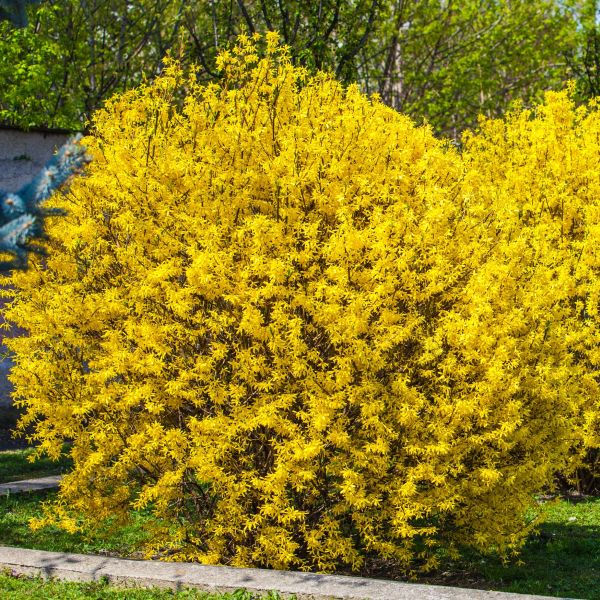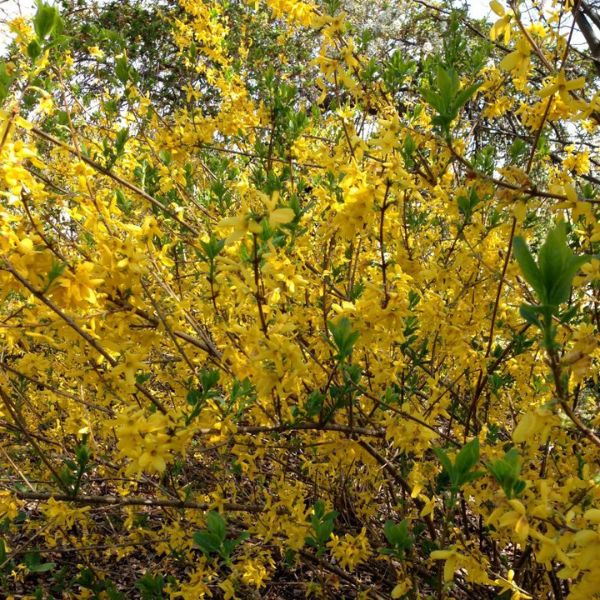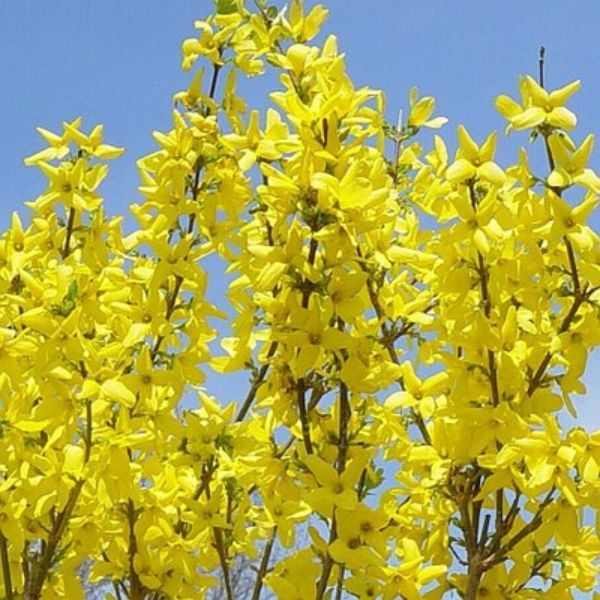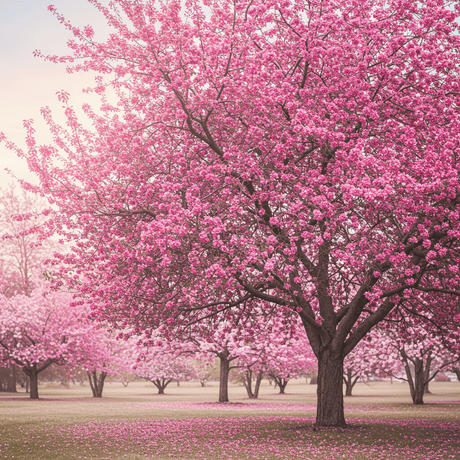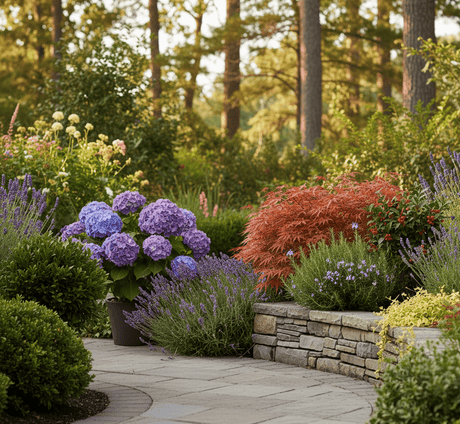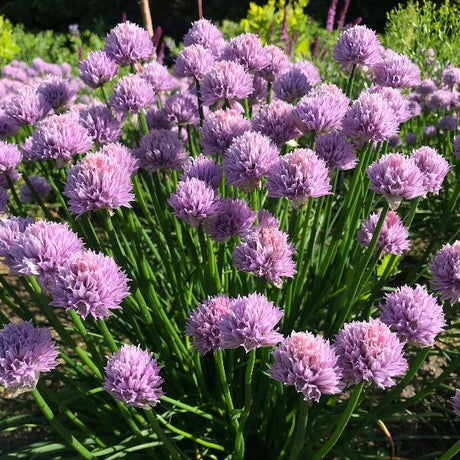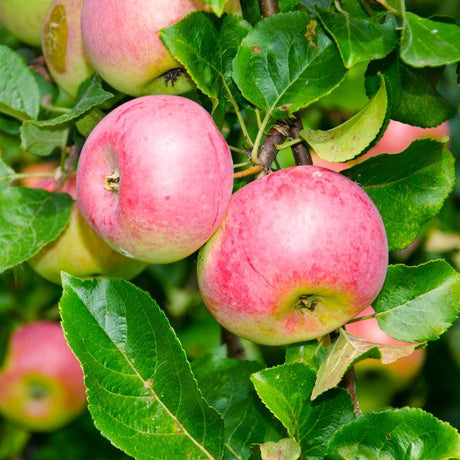Lynwood Gold Forsythia
Forsythia 'Lynwood'
Plant Sentry™
Plant Sentry™

Plant Sentry™ Protected
Your order is protected by our compliance system that:
- Prevents restricted plants from shipping to your state
- Ensures plants meet your state's agricultural requirements
- Protects gardens from invasive pests and diseases
Delivery and Shipping
Delivery and Shipping
Delivery and Shipping
Fast, Safe Plant Delivery
Ships in 3-4 business days • Tracking provided • Weather protected
| Under $50 | $9.99 |
| $50 - $99.99 | $14.99 |
| $100 - $149.99 | $16.99 |
| $150 - $198.99 | $24.99 |
| $199+ | FREE |
✓ Zone-specific timing • ✓ Professional packaging • ✓ Health guarantee
Understanding Plant Options
Nature Hills offers plants in two main formats:
- Container Plants: Grown in pots with soil, sized by container volume and plant age
- Bare Root Plants: Dormant plants without soil, sized by height measurements
Container Plant Sizes
Container sizes indicate plant age and growing capacity rather than liquid volume equivalents. Our containers follow industry-standard nursery "trade gallon" specifications, which differ from standard liquid gallon measurements.
Young Plants (6 months to 18 months old)
| Container Size | Actual Volume | Metric Equivalent |
|---|---|---|
| 2" x 2" x 3" | 0.18 - 0.21 dry quarts | 0.20 - 0.23 dry liters |
| 4" Container | 0.31 - 0.87 dry quarts | 0.35 - 0.96 dry liters |
| 4.5" Container | 0.65 dry quarts | 0.72 dry liters |
| 6" Container | 1.4 dry quarts | 1.59 dry liters |
| 1 Quart | 1 dry quart | 1.1 dry liters |
| 5.5" Container | 1.89 dry quarts | 2.08 dry liters |
Established Plants (18 months to 2.5 years old)
| Container Size | Actual Volume | Metric Equivalent |
|---|---|---|
| 2 Quart | 2 dry quarts | 2.2 dry liters |
| #1 Container | 2.26 - 3.73 dry quarts | 2.49 - 4.11 dry liters |
| 5" x 5" x 12" | 3.5 - 4.3 dry quarts | 3.85 - 4.74 dry liters |
Mature Plants (2-4 years old)
| Container Size | Actual Volume | Metric Equivalent |
|---|---|---|
| #2 Container | 1.19 - 1.76 dry gallons | 5.24 - 7.75 dry liters |
| #3 Container | 2.15 - 2.76 dry gallons | 8.14 - 12.16 dry liters |
Large Plants (3-5 years old)
| Container Size | Actual Volume | Metric Equivalent |
|---|---|---|
| #5 Container | 2.92 - 4.62 dry gallons | 12.86 - 20.35 dry liters |
| #6 Container | 5.25 - 6.01 dry gallons | 23.12 - 26.42 dry liters |
| #7 Container | 5.98 - 6.53 dry gallons | 26.34 - 28.76 dry liters |
Bare Root Plants
Bare root plants are sold by height from the root system to the top of the plant. Plants may exceed minimum height requirements.
Common Sizes:
- Trees: 1 foot, 2 feet, 3 feet, 4 feet, 5 feet, 6 feet
- Shrubs & Perennials: 1 foot, 18 inches, 2 feet
Important Notes
Container Volume Specifications
- Trade Gallon Standard: Our containers follow industry-standard "trade gallon" specifications established by the American National Standards Institute (ANSI Z60.1) for nursery stock
- Volume Variations: Actual soil volume may vary due to plant root systems and growing medium settlement
- Age Indicators: Container size primarily indicates plant age and maturity rather than liquid volume equivalents
Growing Conditions
- Plant size can vary based on variety and growing conditions
- Container size helps indicate plant maturity and establishment level
- Larger containers generally mean more established root systems and faster landscape establishment
Seasonal Availability
- Bare root plants are available seasonally when dormant
- Container plants are available throughout the growing season
- Specific varieties may have limited availability in certain sizes
Questions?
For questions about specific plant sizes or availability, please contact our plant experts who can help you choose the right size for your landscape needs.

Plant Sentry™ Protected
Your order is protected by our compliance system that:
- Prevents restricted plants from shipping to your state
- Ensures plants meet your state's agricultural requirements
- Protects gardens from invasive pests and diseases
Plant Profile & Growing Essentials
Cold hardy, Low Maintenance, Deer-resistant, Flowering, Hedge/Screen, and Drought resistant
Specifications
Specifications
-
Botanical Name
-
Height
-
Width
-
Growing Zones
-
Sunlight
-
Growth RateFast
-
Flower Color
-
Leaf Color
-
Fall Color
-
Pollinator FriendlyYes
-
Pollinator Required
-
Bloom PeriodEarly Spring
-
Does Not Ship ToAK, HI, ID, MT, OR
Planting & Care Instructions
Planting & Care Instructions

Growing Zones 5-8
After a long, cold winter, you crave color just as much as you do warmer weather. That's why people herald the electric yellow blooms of the Lynwood Gold Forsythia (Forsythia 'Lynwood') as a sure sign that spring is here again.
Yes, these are the yellow flowering plants you see around town as soon as the snows melt! Forsythias are typically one of the very first plants to bloom in spring ... and bloom they do! With larger blooms than other varieties, Lynwood Gold Forsythia is one of the showiest of all spring flowering plants!
Along with Robins and Daffodils, you'll know spring has arrived once the Lynwood Gold Forsythia begins to show sweet clusters of bell-shaped, lemon-yellow flowers. The flowers last nearly 2 weeks. The two-inch long bell-shaped golden flowers will gild your landscape.
The show is even more incredible because the bright yellow flowers appear along the entire length of each branch. They appear before the new green leaves, so you'll really notice this welcome display.
The overall shape of a natural Lynwood is very graceful. With naturally upright branches that cascade up and out into an arching shape, the growth habit of an untrimmed Lynwood Gold Forsythia is truly stunning.
In summer, you'll appreciate the dark green foliage. This is an easy-care shrub that requires little maintenance beyond pruning if you'd like to keep it smaller.
During the fall, the leaves can turn yellow with a reddish-purple tint, although this will vary from year to year. Even the bare, arching branches have visual appeal in wintertime. Hardy throughout USDA growing zones 5 to 8, these shrubs grow 6-8 feet tall but spread wide to 8-10 feet!
Planting and Application:
This adaptable ornamental shrub can be used throughout your landscape in many different ways. Give it enough room and it will become a beautiful focal point for you! They are a natural partner for spring bulbs, including Daffodils, Hyacinths, and Tulips. Add Peonies and Iris to extend the blooms! Partner Forsythia with Burning Bushes for a dynamic environment in both spring and fall.
Why not create a magnificent free-form by 'limbing up' these large shrubs to create a fantastic specimen? Use a single plant as a focal point in the lawn to really make an impact. Keep it untrimmed and allow the graceful branches to sweep up and out.
Or keep the lower limbs to the ground for a gorgeous flowering hedge along the length of your property or street? Everyone will thank you for the bold spring blooms!
Easily add privacy on a patio by including a few in a wide, patio planting bed. Plant them 5 feet apart on center to create a solid flowering screen. You'll measure from the center of one to the center of the next plant.
Use several of them along the length of a garden border. They make a wonderful backdrop for smaller plants. Increase the spacing to 10 feet apart if you want each plant to read as an individual. Create outdoor rooms with this easy-care shrub as living walls. How fun to boost your use of your backyard with a private retreat!
If you have a slope that is too steep to mess with, use Lynwood Gold in a mass planting for erosion control. Simply use a zig-zag planting pattern and plant them 5 feet apart on center.
Another wonderful feature of Forsythia is that you can force the budded branches to bloom indoors in late winter. Don't miss out on one of life's simple pleasures! It's easy and so fun to watch the blooms emerge. To force the branches, watch for the swelling buds in late winter. Cut several branches and bring them indoors. Place them in a vase with warm water to get them started. Change the water daily. In a few days, the buds open with a bright yellow flower that will bring spring into your home.
People can, and do, trim these into tidy formal hedges, and you can certainly shape it into a pretty oval or sphere shape. Another pleasing option is to allow them enough space to grow as free-form shrubs and keep their natural yet tidy shape. Give it plenty of space to reach its full height and spread. Let it grow up and out, as it will provide welcome privacy and screening.
- Bright Yellow Flowers!
- One of the First Shrubs to Bloom in Early Spring
- Fast-Growing Upright Shrub
- Great for Cut Flowers & Forced in Winter
- Fabulous Specimen Plant, Hedges, Slopes & Backdrops
#ProPlantTips for Care:
Forsythia grows best in full sun and is adaptable to soil types, including alkaline! Select a location with any type of well-drained soil, as long as it's not saline. It performs best in alkaline soils with a pH of 5.5 to 8.0. This fast-growing plant can handle some occasional drought once it's established in your soil, but you should still plan to provide periodic supplemental water. This is especially important during extended periods of hot, dry weather. Give a good layer of mulch to keep the root systems cool and moist, especially in warm winter zones.
It is a fast grower and can be pruned to any desired size. Prune after flowering in the spring. Prune the perimeters to keep the plant within bounds, if needed at that time. You can also conduct a yearly hard prune on Forsythia to maintain plants in limited space. Cut to within a foot of the ground, and you'll see abundant new growth from the crown. For older plants, a renewal pruning every 3-5 years will help invigorate the shrub! To rejuvenate your Forsythia, simply remove several of the oldest, thickest canes down to the ground.
- Laughs at Late Frosts In Full Sun
- Any Well-Drained Soil - Flourishes in Alkaline Conditions
- Moderate Moisture Needs & Appreciates Mulched Beds
- Prune After Flowering Only
- Disease Resistant, Easy Care, Adaptable & Hardy
What a visual treat after a dreary winter! Gift yourself and your community with one or more of these really special plants! If you need to punch up your springtime landscape, order this popular variety for your landscape today from Nature Hills!

